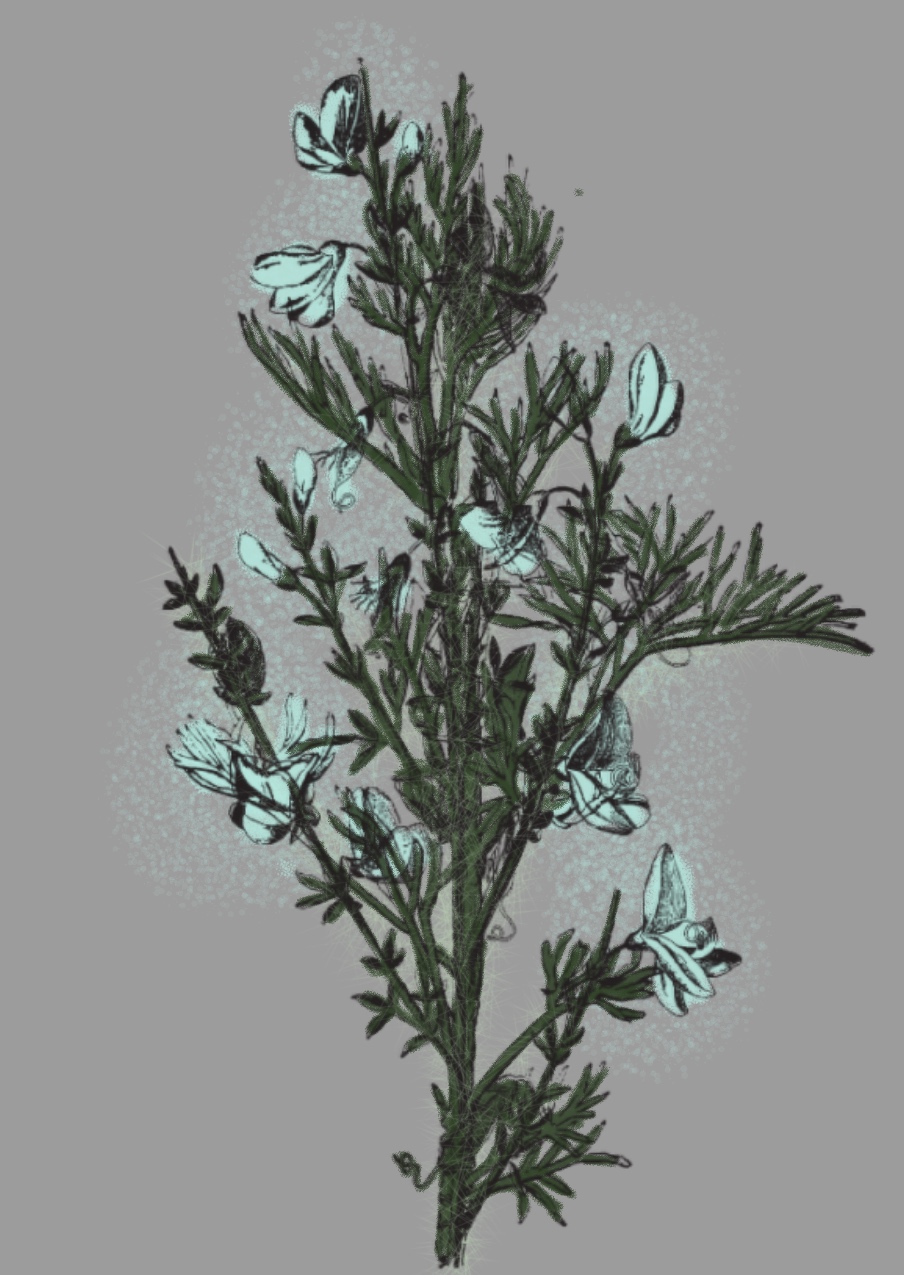Nirthr Mountain Laurel
One of the few flowering plants found in the peninsula, Nirthr Mountain Laurel is a night-blooming carnivorous shrub used to make a tea with mild hallucinogenic properties. This tea is often consumed on the night of the yearly festival for the Dala-Davan People and is said to enhance musical abilities. When the past year has been prosperous, a few members of the community are chosen to be vessels for the greater population through their instruments. The chosen then are taught by an elder how to prepare the sacred tea with the petals of the Laurel's "Moonflower", and several batches are made. The tea is then cooled and distributed to the populace. It is said to be bittersweet.
The stems and leaves are dried and ground up to be added into various meals. This peppery powder also contains medicinal properties when in the hands of an expert herbalist. The preparation must be done carefully due to the spiny fuzz on the exterior of the stems, which naturally protects the plant from harsh winds in the tundra. The fuzz is a known irritant and can cause small swelling lumps on the area of skin it has been exposed to. Cultivators have special gear to protect them from this.
Basic Information
Genetics and Reproduction
Since the Nirthr Mountain Laurel is well-adapted to the cold temperatures of the tundra, it is a mostly asexual species and produces few seeds. Domesticated varieties sometimes drop more seeds as they die.
Growth Rate & Stages
Nirthr Mountain Laurel grows back from its roots as the permafrost layer begins to melt, taking 3 months to reach maturity. Once the flower has bloomed, it only takes about a month for the roots to separate from the growth, and occasionally the dropped growth will create a new root cluster. After a few years of returning from the roots, the shrub withers completely, but not before depositing seeds that will replenish the existing habitat as well as spread elsewhere through birds and wind.
Ecology and Habitats
The moonflowers are most abundantly found in the rows and columns of a Dalan farming plot, as the plant is relatively uncommon, with many plants growing in close proximity to each other in order to build stronger root systems. It is slightly more hallucinogenic to humans than gnomes, and is cultivated in lesser quantities by the Davans, who are nomadic anyway. It grows naturally in the Nirthr Mountains near stagnant water, where it was first discovered by Dalans.
Biological Cycle
Due to it's climate being tundra or taiga, the Nirthr Mountain Laurel blooms for up to a fortnight following the summer solstice, although wild specimens are less regular and shorter. As it withers, it releases nutrients back into the soil for the next generation of laurel the following solstice.
Additional Information
Domestication
The laurel has been domesticated by the Dalans for over 900 years. Varieties include variants for the medicinal, psychactive, and culinary uses of the plants.
Perception and Sensory Capabilities
The pistil of the moonflower contains tiny hair-like spines which are used to detect insect-like behavior. When a spine has been triggered, the moonflower releases a sticky-sweet serum which traps the insect. The serum contains enzymes which slowly break down the body of the insect and transfers the nutrients to the plant. It uses this extra source of nutrients to supplement the often nutrient-poor soil of the Nirthr Peninsula.



